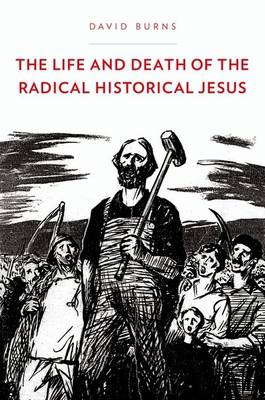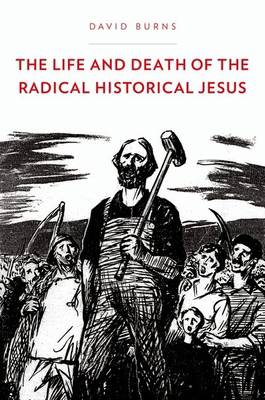
Onze Vivlio e-readers ondervinden momenteel synchronisatieproblemen. We doen er alles aan om dit zo snel mogelijk op te lossen. Onze excuses voor het ongemak!
- Afhalen na 1 uur in een winkel met voorraad
- Gratis thuislevering in België vanaf € 30
- Ruim aanbod met 7 miljoen producten
Onze Vivlio e-readers ondervinden momenteel synchronisatieproblemen. We doen er alles aan om dit zo snel mogelijk op te lossen. Onze excuses voor het ongemak!
- Afhalen na 1 uur in een winkel met voorraad
- Gratis thuislevering in België vanaf € 30
- Ruim aanbod met 7 miljoen producten
Zoeken
Omschrijving
In this cultural and intellectual history, David Burns contends that the influence of biblical criticism in America was more widespread than has been thought. Burns proves this point by uncovering the hidden history of the radical historical Jesus, a construct created and sustained by freethinkers, feminists, socialists, and anarchists during the Gilded Age and Progressive Era. The result of this exploration is a new narrative revealing that Cyrenus Ward, Caroline Bartlett, George Herron, Bouck White, and other radical religionists had an impact on the history of religion in America rivaling that of recognized religious intellectuals such as Shailer Mathews, Charles Briggs, Francis Peabody, and Walter Rauschenbusch. The methods utilized by radical religionists were different from those employed by elite liberal divines, however, and part of a larger struggle over the relationship between religion and civilization. There were numerous reasons for this conflict, but Burns argues that the primary cause was that key radical religionists used Ernest Renan's The Life of Jesus to create an imaginative brand of biblical criticism that struck a balance between the demands of reason and the doctrines of religion. And this measured approach allowed Robert Ingersoll, Elizabeth Cady Stanton, Eugene Debs, and other secular-minded thinkers who sought to purge Christianity of its supernatural dimensions to still find something wonderful in the religious imagination and make common cause with an ancient peasant from Galilee. This provocative blend of reason and religion produced a vibrant countercultural movement that spanned communities, classes, and creeds and makes The Life and Death of the Radical Historical Jesus a book that deserves a wide readership in an era when public intellectuals and politicians on both the left and right draw rigid lines between the secular and the sacred.
Specificaties
Betrokkenen
- Auteur(s):
- Uitgeverij:
Inhoud
- Aantal bladzijden:
- 288
- Taal:
- Engels
- Reeks:
Eigenschappen
- Productcode (EAN):
- 9780199929504
- Verschijningsdatum:
- 31/01/2013
- Uitvoering:
- Hardcover
- Formaat:
- Ongenaaid / garenloos gebonden
- Afmetingen:
- 236 mm x 157 mm
- Gewicht:
- 513 g

Alleen bij Standaard Boekhandel
+ 262 punten op je klantenkaart van Standaard Boekhandel
Beoordelingen
We publiceren alleen reviews die voldoen aan de voorwaarden voor reviews. Bekijk onze voorwaarden voor reviews.











